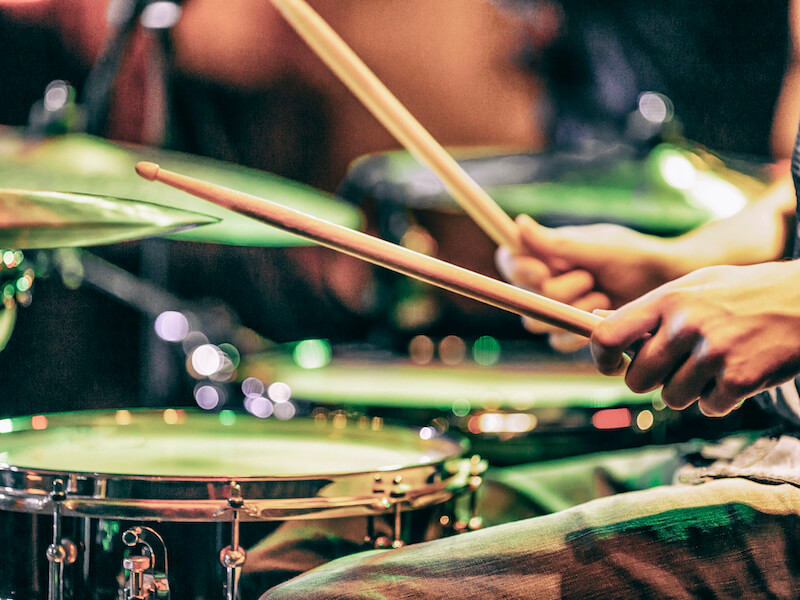
Musicians rock. Their performances bring us so much happiness. The drawback is that music is nearly always loud, in fact, many people prefer it that way. The musicians themselves are at an increased danger of hearing damage since they are exposed to loud music just about every day.
Whether your income depends on music or not, you’ll still want to be able to hear your favorite songs when you’re pushing 60, 70, or 80. For musicians, safeguarding their hearing is the key to a long and successful career. For the rest of us, hearing protection is the key to a lifetime of musical enjoyment and enrichment.
Music is surprisingly loud
If you ask the majority of individuals whether a jet engine is loud, they’ll likely say yes.
But what about music? People might not be so fast to answer that question if you ask them if a violin or acoustic guitar is loud. Imagine their surprise when they discover the reality: that music is certainly loud! Your ears can even be damaged by classical music which can reach fairly loud volumes.
Sounds higher than 90 dB can be created by a violin, for instance. A leaf blower is about this loud. In Europe, for instance, they have regulations that require ear protection for anybody who works in a work environment where there is noise above 85 dB.
And if you’re working with music on a daily basis, consistent exposure to that kind of volume, especially without ear protection, can severely damage your hearing over time.
Can you protect your ears from noise damage?
Okay, musicians who want to keep their hearing for years to come need to safeguard their ears. So what can musicians do to safeguard their hearing and still enjoy the music they enjoy so much?
Well, here are a couple of simple things musicians can do:
- Track your volume: Knowledge is power, right? So being aware of volume levels of sounds around you will help you safeguard your hearing. Keeping track of the volume on amps and PA systems is part of it. But you can also keep track of day-to-day volume levels of environmental noises using a decibel meter app that you can download on your cellphone. You will need to make a few changes if the meter regularly reads louder than 85 dB.
- Take breaks: Much like any part of your body, your ears can become fatigued and may need a little break. So take regular breaks from the noise. In this way, noises won’t overpower and harm your ears. Duration is nearly as important as volume with regard to hearing health. The difference between the perfect amount of stimulation and too much can come down to taking regular breaks.
Wear ear protection
Using hearing protection is the number one most effective way to safeguard your hearing. Lots of musicians are concerned that ear protection will mute the sound and impact its overall sound quality. But depending on what kind of hearing protection you use, that may not always be true.
- Ear plugs made primarily for musicians: Disposable earplugs are something that’s likely very familiar to most individuals. They’re fairly good at stopping a lot of sound though they sometimes don’t fit very well. They aren’t hard to find, don’t cost much, and can be thrown away easily. For musicians, they aren’t the best solution. But earplugs made just for musicians are also available for a little more money. A special material and state-of-the-art engineering are used to help these earplugs fit comfortably in the ear and reduce external noise by about 20% while preserving the audio fidelity. This solution is perfect for musicians who require a light to moderate level of protection (and who don’t have a lot of money to invest in earplugs, or are likely to misplace them).
- Electronic earplugs: Electronic earplugs work in pretty much the same way as high-quality, non-electronic earplugs. The majority of the sound will be blocked by the earplug itself. But the earplug itself will pipe in the sound you hear. This option is perfect for individuals who work in particularly loud environments, and who are looking for more options in terms of controlling volume.
- In-ear monitors: Electronics are a significant part of modern music. An in-ear monitor takes those electronic signals and transmits them directly to a device placed inside of your ear (called an in-ear monitor). It’s like a specialized little speaker for your ear, and the majority of monitors can block out sound from the outside environment (thanks to a fairly tight fit and special design). This means you can hear exactly how you sound, at a volume you control. In-ear monitors are practical for individuals who work mainly with electronically amplified instruments.
Protect your ears, and protect your career
It’s better to begin safeguarding your hearing early, before any significant harm occurs. With options available at just about every price point, there are simple ways for everybody to protect their hearing and their future. Keep in mind, hearing protection for a musician is an investment in your career. It’s one way to ensure you’ll be making amazing music for many years (maybe even decades) to come!
Contact us so we can help you get started.

